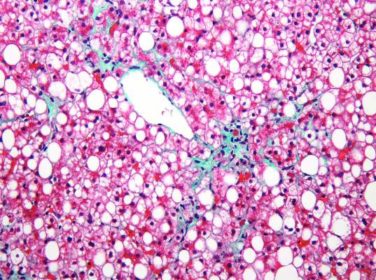EXPERT ANALYSIS FROM THE CARDIOVASCULAR CONFERENCE AT SNOWMASS
SNOWMASS, COLO. (FRONTLINE MEDICAL NEWS) – The ongoing COAPT trial will not only determine the future of the MitraClip device for transcatheter mitral valve repair, it will also answer a key broader question: Does fixing functional mitral regurgitation even provide meaningful clinical benefit?
“This is an extremely important study because we don’t know whether correcting secondary [mitral regurgitation (MR)] does anything to change the prognosis or survival in the disease. The [Food and Drug Administration] gets kudos for insisting on this study. This will be a major trial in which we learn whether interrupting functional MR adds anything to guideline-directed medical therapy or not,” Dr. Michael J. Mack predicted at the Annual Cardiovascular Conference at Snowmass.
The distinction between primary degenerative MR and secondary functional MR is key. In primary MR, the problem is that the valve itself has worn out. Secondary MR is a disease of the left ventricle, not the mitral valve. The source of the valve problem in secondary MR lies in a dilated left ventricle, which causes stretching of the valve annulus and displacement of the papillary muscles. This left ventricular dilation can be caused by either ischemic or nonischemic dilated cardiomyopathy. Regardless, functional MR is a disorder of left ventricular remodeling in which anatomically normal valve leaflets don’t coapt sufficiently.
The MitraClip device is designed for percutaneous repair of MR in patients deemed at unacceptable risk for surgery. The device clips the valve leaflets together without surgical suturing. The MitraClip won FDA approval in fall 2013 for repair of severely symptomatic primary degenerative mitral regurgitation in patients who have a reasonable life expectancy but prohibitive surgical risk due to comorbidities. Roughly 1,500 MitraClip procedures have been done to date in the United States, and the initial commercial experience will be presented as a late-breaker at the annual meeting of the American College of Cardiology in San Diego in March.
Functional MR is a whole different story. The FDA decided that for the MitraClip to gain an additional indication for functional or secondary MR, a randomized controlled trial would be required. Moreover, after considerable debate among valve experts, the FDA decreed that the control group should consist of patients on guideline-directed medical therapy since – much to the surprise of many physicians and surgeons – to date there is actually no persuasive evidence that surgical repair or replacement is effective therapy for functional MR, explained Dr. Mack, former president of the Society of Thoracic Surgeons and medical director at Baylor Health Care System in Plano, Tex.
Dr. Mack and Columbia University cardiologist Dr. Gregg W. Stone serve as co–principal investigators of COAPT , scheduled to include about 420 high-surgical-risk patients with severely symptomatic secondary MR at 75 U.S. sites. Patients will be followed clinically and by transthoracic echocardiography for 5 years, with the primary endpoint being the 2-year rates of survival and freedom from repeat hospitalization for heart failure.
Patients with both ischemic and nonischemic cardiomyopathies are being enrolled. However, their outcomes will be analyzed separately because investigators believe these disorders may not respond in the same way to any interventional therapy.
“I think that nonischemic cardiomyopathy is an idiopathic disease of unknown etiology, and probably multiple etiologies. It’s reasonable to think that in ischemic MR there’s something we can treat and in that way prevent a progressive process from ongoing, and even cause some reverse remodeling. I don’t think we have any clue in nonischemic cardiomyopathies as to what the disease causes are and whether correcting the secondary MR will cause reverse remodeling. So if I were to bet one way or another on which one’s going to respond better to MitraClip therapy, I would say ischemic cardiomyopathy,” the surgeon said.
As to who’s at prohibitive surgical risk and therefore potentially eligible for percutaneous repair, the criteria established for use of the MitraClip for its approved indication also apply to candidates for the COAPT trial . These criteria include an STS mortality score of 8%-10% or more, a porcelain aorta, severe COPD, advanced liver disease, frailty, severe mitral annular calcification, what surgeons call a “hostile chest” due to prior sternectomy or other causes, and/or severe pulmonary hypertension. The determination is to be made jointly by a cardiologist and surgeon functioning within a local heart team.
Enrollment in the COAPT study has been “extremely difficult” because of widespread, albeit misplaced, pro-surgery bias, but the roster should be filled by the end of the year, Dr. Mack said.
He observed that a major disadvantage of the MitraClip is that it does only one thing: clip the leaflets together.
“In surgery, at least for primary MR, we never do one thing. We’ll resect, we’ll put cords in, we’ll do an annuloplasty,” he explained.
In the future – post COAPT – a likely scenario is that the MitraClip will routinely be employed together with a complementary percutaneous posterior mitral annuloplasty procedure, he said. The top candidate, in his view, is the Valtech Cardioband device.
“That’s the one with the most experience and success for transcatheter mitral annuloplasty. It’s done under 3-D transesophageal echocardiographic guidance. Thirty patients have been enrolled in a European feasibility trial, with a device success rate of 88%. Eighty-five percent of those 30 patients are none-to-trace MR at 6 months’ follow-up,” said Dr. Mack.
Dr. Bernard J. Gersh said that he totally agrees with Dr. Mack’s prediction of divergent outcomes in COAPT depending upon whether patients have ischemic or nonischemic dilated cardiomyopathy.
“As you look at the history of surgical procedures, those that are directed to a mechanism are successful, and those that are directed to the consequences of something are not. Idiopathic dilated cardiomyopathy is a totally different disease – it’s dysfunctional cells, we don’t really know why, and there’s very little fibrosis or scar. It’s a completely different mechanism. So I agree: If I had to bet, it’d be that it’s in ischemic MR that the MitraClip is relevant,” said Dr. Gersh, professor of medicine at the Mayo Clinic in Rochester, Minn.
The COAPT trial is sponsored by Abbott Vascular. Dr. Mack reported receiving research grants from Abbott and Edwards Lifesciences.




